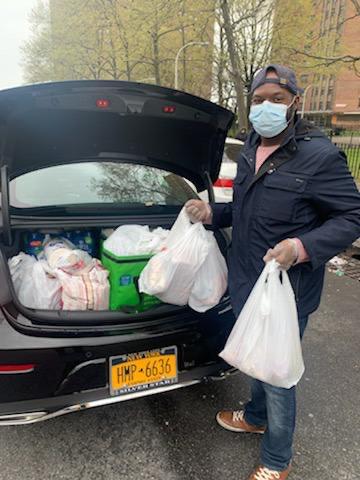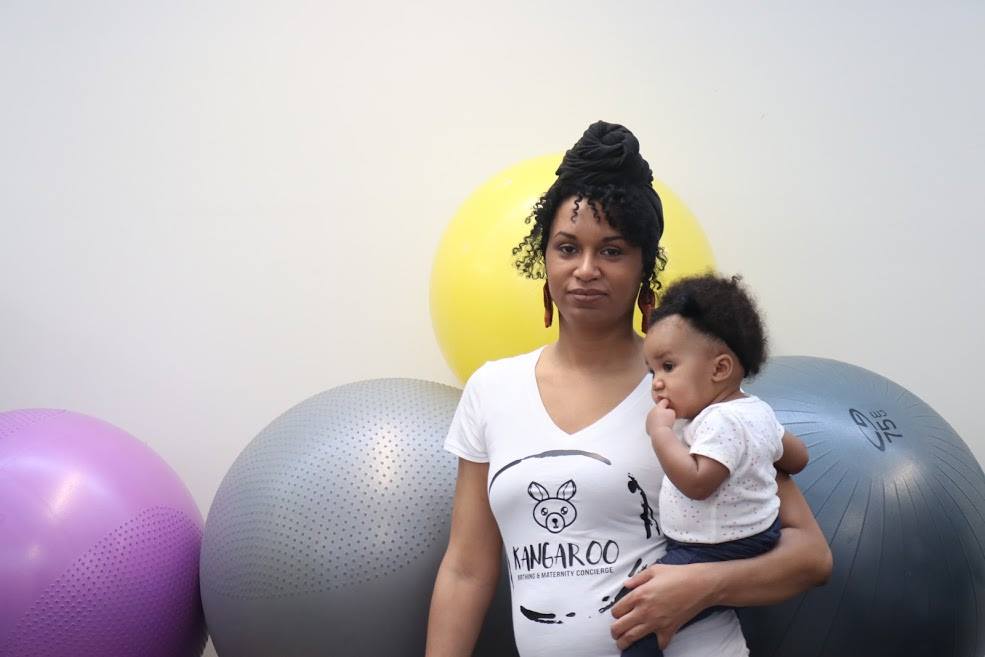These neighborhood leaders are continuing the fight for racial justice, from mutual aid projects in Brownsville, Brooklyn to maternal health training in Pittsburgh, Pennsylvania.
At the peak of the racial justice uprisings in 2020, when streets were filled with people demanding change, it felt like we were at a turning point. Across the country, organizers and neighbors were coming together to understand and dismantle the systems of white supremacy, whether in reading groups or as part of direct-action campaigns. It was a moment of possibility and hope: perhaps, finally, we would see lasting change.
While some change has unfolded in the past three years, it is not at the scale or breadth that many white allies had committed to. In many cities, including New York, police budgets have soared while schools and libraries remain under-funded. However, all is not lost. Before the racial uprising, there were thousands of organizations around the country committed to the fight for racial justice—the majority of them led by Black, Indigenous, and People of Color (BIPOC) organizers. Today, those organizations continue their work.
Below, we’ll outline why it’s so important to start racial justice projects from the community level. We also share some of the most impactful racial justice projects that have been raised on ioby. These organizations provide insights into how you can renew the push for racial justice in your city or support efforts that already exist. Let’s get to work!
Why is it important to focus on racial justice solutions at the local level?
Across all sectors of American society, white Americans receive systemic advantages, from “legacy” preferences in college admissions to less discrimination when seeking an apartment or job. This system of advantages—and the institutions that cement those advantages in place, such as the court system—is called white supremacy.
While white supremacy is present at the very root of American culture, it is important to focus on racial justice solutions at the local level because those benefits and disadvantages are felt in different ways in different places. The location-specific projects below show the importance of uplifting communities, block by block. Below, you’ll see how activists are providing racial justice in their specific neighborhoods.
East Brooklyn Mutual Aid
Mutual aid refers to a voluntary and cooperative practice in which individuals or groups come together to provide assistance, resources, and support to each other, often with a focus on addressing immediate needs or overcoming challenges. At the beginning of the coronavirus pandemic, mutual aid organizations sprung up around the country to provide groceries, personal protective equipment (PPE), and school supplies to elders, immunocompromised people, families, and children.
One of these organizations was East Brooklyn Mutual Aid in Brownsville, Brooklyn. Since forming in 2020, EBMA has distributed more than one million pounds of food to over 100,000 residents. They conduct this work through their program, Black Radish Home Delivery, in which they “source low-cost groceries from predominantly Black distributors and farmers and deliver them directly to the doors of hungry New Yorkers.”

This forges racial justice by supporting Black farmers—who represent only 1.4 percent of farmers compared with about 14 percent 100 years ago. This loss is the result of racist practices such as reverse redlining and land theft. In the 20th century, Black farmers were often targeted by lenders and government agencies that took advantage of their lack of access to credit and legal protections. This resulted in a substantial loss of land and wealth for many Black farming families—the impact of which continues to be felt.
To expand their mutual aid work, grow their network of Black farmers, and support community members, East Brooklyn Mutual Aid is currently fundraising for the Black Radish Grocery Store. The store will provide affordable, delicious produce at Chestnut Commons, a low-income development building.
According to the organizers, “The ultimate goal is to provide a holistic approach to address the interrelated needs of the Afro-diasporic community. EBMA is driven by a larger vision, using food and culture as the primary entry points into community health.”
Maternal Health Training & Certification Initiative in Pittsburgh
The disproportionate maternal death rate between white and Black mothers is one of the most tragic examples of racism and white supremacy in the United States. According to the CDC, Black women are three times more likely to die from pregnancy related causes than white women due to a variety of factors, including lack of access to healthcare and interpersonal racism from doctors.

In Alleghany County, these rates are even higher: Black women in Pittsburgh die from pregnancy and childbirth related complications at a rate higher than 97 percent of similar cities. To address this crisis, a local organization named Unshakeable Motherhood supports women of color by providing comprehensive maternal health services, from delivery support to guidance on breastfeeding.
They are currently growing the number of Black doulas and midwives available to practice in Pittsburgh, which will create a long-term dent in the number of mothers and children who unnecessarily die during childbirth. By increasing access to doula certifications and training, they are addressing—parent by parent— the long term harm that racism, white supremacy, and lack of access to healthcare has caused.
Black to the Land Coalition
According to National Geographic, people of color are three times less likely to have access to green space than their white peers. This has a huge impact: studies show that time spent in nature increases mental and physical health, including a decrease in blood pressure and an increase in serotonin, or our brain’s “happy chemical.”
Enter the Black to the Land Coalition, “a coalition of Black, Brown, and Indigenous nature enthusiasts, intent on helping BIPOC people to actively engage in meaningful outdoor experiences.” Their current project is Be Out! which will expand their Urban Forest School. The school provides experiences in the natural world to children aged zero to ten each and every month—ensuring that every person has a chance to understand the magic of nature.
The benefits are numerous. In addition to a wonderful day hiking, kayaking, camping, or birding, the Black to the Land organizers note that “when people enjoy green spaces, they are more likely to help protect the environment by being more conscious of safer, more sustainable ways.” In this way—and many more—movements for racial and environmental justice are inextricably bound.
Mutual Aid Internship for Staten Island’s Youth of Color
In order to sustain racial justice for the long-run, one organization is working to ensure that youth of color have paid opportunities to engage in mutual aid work. Based in Staten Island, Forest Ave. Youth is a six-month long program that explores themes like power, identity, privilege, and community healing.
In addition to these workshops, young people are given the opportunity to focus on a skill, such as farming or community storytelling, that will empower their future careers. As the organizers note, when the world shut down at the start of the pandemic people did not stop – they came together. And for many, that work has not stopped. “We do not want the work to just stop with us or exist for a moment; we desire to build the next generation of food justice leaders of color in Staten Island who will transform their community and beyond.”
In this way, the impact of the 2020 racial uprisings will be felt far into the future—in the hands of young people planting a new garden or delivering food to their neighbors. The movement for racial justice continues, neighborhood by neighborhood and block by block.
Additional Resources
- ioby’s Racial Justice Toolkit was co-created with racial justice organizers in Cleveland. It provides case studies, webinars, and tips for starting your own project—all the building blocks you’ll need to get started doing the work.
- The Southern Poverty Law Center’s guides and links unpack white privilege, from how to address it in a first-grade classroom to speaking with family members during Thanksgiving. It’s work that many white folks committed to in 2020, and remains essential today.
- In addition to crowdfunding on ioby, the Philadelphia Foundation provides grants of up to 100K to organizations that are Black-run and Black-led. These funds can be used to develop current racial justice projects or create new ones.
ioby is a national crowdfunding nonprofit, but we’re much more than that. We help connect leaders (like you!) with one-on-one coaching and support to raise the money they need from their communities to make our neighborhoods safer, greener, more livable, and more fun.
Have a great idea to get good done in your neighborhood? We want to help! Share your idea with us and we can help get you started.